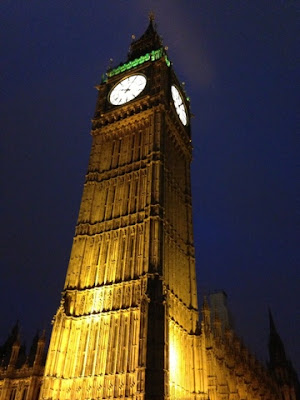Geek that I am, we swung by the excavation site of the Rose Theater on our way to the Globe Wednesday morning:
 |
| This place |
The Rose was one of the major theaters of Shakespeare's day (I'm not sure why the Globe gets all the glory since he also worked at the Rose and the Curtain. I'm guessing it's a bit of the Mona Lisa effect), and was owned and operated by Philip Henslowe.
 |
| This guy (not really, but in my favorite movie and in my mind, yes) |
Historians had a rough idea of its location. In 1989, they discovered the foundation of the theater in the basement of an office/apartment building that was slated to be torn down and turned into a parking structure.
The Museum of London executed an excavation of the site and found hundreds of artifacts (including the ring I mentioned in a previous post). A campaign to save the Rose ensued. They're still trying to raise the funds to purchase the building above the site to ensure its protection, and in the mean time this small group of passionate volunteer 20-somethings put on productions at the site and show the remains to the public.
This is what we went to see (or at least what I went to see. My parents are very nice to indulge me in my interests). Their production of Ben Jonson's "The Alchemist" was mostly well acted but poorly directed. The play was difficult to follow, a sure sign of actors who didn't do their Dictionary Work. However, it was presented by ten passionate actors on a wooden dock in a basement for an audience of about 30 people arranged in two rows on black plastic chairs. The set was no more than a desk, a chair, a fainting couch, and some fabric draped over the railing upstage that separated us from the cavernous darkness of the archeological site. The "stage" was lit by a few stage lights and several candles, which made Dad a little nervous, and occasionally in the scene breaks we could hear a slow dripping from the blackness upstage.
It was awesome.
After the show, one of the volunteers stuck around to give a quick run-through of the history of the site and to turn on the red lights marking the perimeter of the foundation.
 |
| The double lines in the middle mark the two stages that existed. The rings show the exterior wall and the inner gallery of the audience. In the foreground is the power strip for the red lights. |
 |
| You can see from the red lights running through the set that the temporary stage was built over one of the galleries overlooking the original stage site. |
After the show we decided to swing over to Westminster to see Big Ben and the London Eye before we left the city. Here they are!
 |
 |
No comments:
Post a Comment